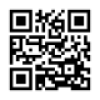Tel:+86 135 6203 9168
E-mail:zivibearing@foxmail.com
WhatsApp: +86 13562039168
Add: Yandian Industry Park,
Liaocheng City, Shandong
Http://www.zivibearing.com

|
|
Advances in applied research on rolling bearing life and reliabilityWith the rise of industrial big data and the Internet of Things, the study of bearing life and its health detection will be pushed to new heights. Research on the assessment of its health status and prediction of its operation status based on big data will help improve the reliability of bearing equipment, avoid the deterioration of its health status and extend its working life. This paper provides a review of the results achieved at home and abroad on bearing health detection and life prediction, and provides an outlook on its prospects. Although existing research has achieved some noteworthy results, little research has been carried out on key technologies such as operational data collection, degradation fault characteristic information extraction, health state assessment and remaining life prediction of bearing equipment, so more research in this area has important theoretical significance and application value to further improve the life use performance of bearings. Rolling bearings are one of the key components that determine the health status and life of machinery. The study of bearing life and its health status is characterised by many influencing factors, large life dispersion, time-consuming tests, difficult data accumulation and difficult theoretical modelling. With the accumulation of data in the process of manufacturing and operation, the development and popularisation of technologies such as the Internet of Things, cloud computing and intelligent algorithms, the production environment has slowly become the basis for a big data environment, based on which bearing health management and life prediction can enable bearings to achieve mutual comparison with their own state, accumulation of data and experience models, collaborative diagnosis of faults, and thus become a self-learning and self-growing capacity of the intelligent system. In such a system, the bearing system is no longer an individual operating system, but a prognostic analysis of all equipment in the entire manufacturing operation system through an information network system, so that the control and decision-making side can see the state and operating capability of the bearing. At this stage, each type of bearing is managed by its own specialist sensor and analysis equipment, and there is no unified platform to integrate common features in bearing faults with their corresponding common, reconfigurable algorithms. On the other hand, although sensors and analysers can perform basic monitoring and prediction tasks, they are not well suited for root cause mining, highly responsive prediction methods, large-scale equipment clusters, and collaborative management of multiple bearings. Bearing life refers to the total number of revolutions or operating hours before one of the rolling elements or raceways of a bearing suffers a fatigue spall. Bearing life testing is inseparable from bearing life testing machines, and the development of bearing life testing machines has also witnessed the development of bearing life research. At present, China's bearing life testing machine design, research and development, production, etc. has been completely independent, and even certain technical concepts have reached the international leading level, but compared to SKF, Schaeffler, Timken, Enteion and many other foreign bearing big companies for a very late start. In the early 20th century, China's bearing industry development mainly relies on the former Soviet Union big brother's technical support, bearing life test mainly in the ZS type bearing life test machine based on the quality of assessment of this test machine has long been eliminated in the bearing service performance development requirements; bearing life strengthening test machine to achieve independent production has become imperative, the 1990s, Hangzhou bearing test research centre in On the basis of foreign advanced life testing machine, independently developed ABLT-1 type automatic control rolling bearing fatigue life strengthening testing machine, for the domestic life testing machine opened up a new market and new prospects, at that time already has the international advanced level. With the birth of ABLT-1 type rolling bearing fatigue life strengthening testing machine, the development of domestic bearing life testing machine like a spring, but most of them are derived or improved on the basis of ABLT-1. |
Yandian Industry Park, Liaocheng City,
Shandong
zivibearing@foxmail.com
+86 135 6203 9168

Mobile station